Setting the Record Straight on the APA’s “Good Cause” Exception, by Reed Shaw
In defending President Trump’s April 2025 memorandum directing agencies to rescind regulations they deem to be “facially unlawful,” a recent post in this forum misinterprets the scope of the “good cause” exception to the notice-and-comment requirements of the Administrative Procedure Act (APA).
The President’s memorandum instructs agencies to invoke the exception in rescinding existing rules, but the rationales the memorandum advances, and that the recent post repeats, are faulty.
The APA’s notice-and-comment requirements apply to rescission rules as they do to any other rules. The statute provides an exception “when the agency for good cause finds … that notice and public procedure thereon are impracticable, unnecessary, or contrary to the public interest.” But courts have repeatedly held that exceptions to notice-and-comment requirements must be “narrowly construed and only reluctantly countenanced.” The good cause exception in particular “is an important safety valve to be used where delay would do real harm”–one that “should not be used … to circumvent the notice and comment requirements whenever an agency finds it inconvenient to follow them.”
President Trump’s memorandum invokes the “contrary to the public interest” and “unnecessary” prongs of the good cause exception. With respect to the former, the memorandum asserts that “[r]etaining and enforcing facially unlawful regulations is clearly contrary to the public interest.” Thus, he argues, agencies should be able to summarily rescind rules that they newly believe to be unlawful under recent Supreme Court cases like Loper Bright and West Virginia without following the APA’s notice-and-comment procedures.
But as we and others have pointed out, that justification does not comport with the APA’s plain text, case law interpreting it, or the Attorney General’s interpretation of the law when it was enacted. The statutory text is clear: the question is not, as the administration seems to believe, whether retaining a purportedly unlawful rule is contrary to the public interest, but instead whether providing notice and comment before rescinding that rule is contrary to the public interest. As the D.C. Circuit has explained and other courts of appeals have affirmed, the contrary to the public interest prong of the good cause exception applies “only in the rare circumstances when ordinary procedures—generally presumed to serve the public interest—would in fact harm that interest.” Quintessentially, the exception may apply “when the timing and disclosure requirements of the usual procedures would defeat the purpose of the proposal—if, for example, announcement of a proposed rule would enable the sort of financial manipulation the rule sought to prevent.” This settled interpretation is consistent with the Attorney General’s Manual on the APA from the time of the law’s enactment, which similarly focuses on whether advance notice of a rule might defeat its very purpose. This administration’s rescission rules are unlikely to present such scenarios.
Second, President Trump’s memorandum asserted that “notice-and-comment proceedings are ‘unnecessary’ where repeal is required as a matter of law to ensure consistency with a ruling of the United States Supreme Court.” Although this framing correctly focuses on the necessity of procedure (rather than the rule itself), it amounts to the kind of “bald assertion that the agency does not believe comments would be useful” that courts routinely reject. The unnecessary prong of the good cause exception applies only for rules that are “routine determination[s], insignificant in nature and impact, and inconsequential to the industry and to the public.” The Attorney General’s Manual agrees, explaining that “‘[u]nnecessary’ refers to the issuance of a minor rule or amendment in which the public is not particularly interested.” But the administration rarely characterizes its deregulatory efforts in these terms, and for good reason: the potential impact of repealing the rules that the administration is targeting is likely to be large.
The President’s memorandum appears to assume that soliciting public input regarding whether to rescind an “unlawful” rule would be a waste of time. But the D.C. Circuit has rejected precisely that way of thinking, explaining that forgoing notice-and-comment for a rule that an agency believes is unlawful “ignore[s] the fact that the question whether the regulations are indeed defective is one worthy of notice and an opportunity to comment.” Indeed, comment may be particularly helpful when an agency is faced with applying novel and evolving Supreme Court precedents to longstanding regulations. And even if the purported unlawfulness of a rule were cut-and-dry, what to do about it may not be—public comment might assist the agency in determining whether to phase out a rule over time, rescind only the unlawful part of a rule, or pursue alternatives other than rescission, particularly where the public might have relied upon a regulation for years. Thus, notice and comment can help inform the kind of “reasoned decisionmaking” that the APA requires an agency to engage in when it changes course. As the Fifth Circuit recently put it, “in rescinding a prior action, an agency cannot simply brand it illegal and move on.”
Unfortunately, the memorandum is just one of the ways that the Trump Administration has pushed incorrect interpretations of the APA’s exceptions to accelerate its deregulatory program. For example, the President issued an executive order stating without reasoning that notice-and-comment is unnecessary when he directs an agency head to rescind a rule, and the State Department has asserted that all immigration matters fall within the narrow “foreign affairs” exception to notice and comment. But the courts applying the APA’s exceptions are not likely to countenance the President’s faulty invocations of them, nor should they.
Reed Shaw is a Policy Counsel at Governing for Impact.



